Experiential Marketing: 4 Es to Future-proof Your Strategy
On the 17th of July, 1955, in Anaheim, California, one man opened the gates to a place that was to change the way we experience the world. That place was Disneyland. In his book, Fantasyland, Kurt Andersen argues that the moment Walt Disney unveiled his first park, he caused a monumental shift in the evolution of marketing in the USA and beyond; blurring the lines between reality, fantasy, and experience, forever.
Suitably branded ‘The Happiest Place on Earth’, Disney’s take on the classic road-side carnival transformed the format into “A bizarre reality where advertising met animation”. From this point in history, we can see the first, formative steps toward what Joseph Pine described as The Experience Economy.
Flash forward to today and it’s not just theme parks but restaurants, shopping malls, products, and even entire cities that have received the Disney treatment. A heady mix of merchandising, theming, consumerism, and forced-emotional-connection; the experience economy is now a global state of mind.
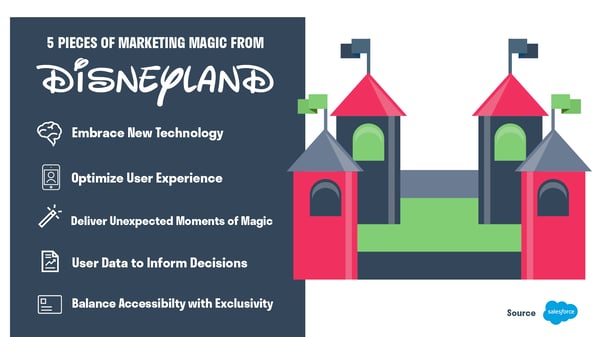
So, what is the result of Disneyfication from a marketing perspective? Well, the shift is seen clearly when we consider the traditional marketing mix, The 4 Ps and its newly proposed competitor, The 4 Es.
It’s widely accepted that the 4Ps of the marketing mix was established by Jermone McCarthy in the 1960s. The 4Ps are composed of the following criteria: Product, Place, Price, Promotion.
Despite being trusted by marketers the world over for decades, questions are now being raised as to whether the 4Ps model has become outdated. One critic of the framework, Brian Fetherstonhaugh, calls for a total overhaul of the marketing mix to replace the 4Ps with the 4Es.
What are the 4Es of Experiential Marketing?
To understand the 4E’s we must first acknowledge that the consumer market has changed drastically since 1955. As Fethertonhaugh states, “The consumer has seized control.”
We now operate within a customer-centric economy. Audiences are more diverse and demanding now than ever before. And our job, as marketers, has shifted its focus away from selling products and toward creating sublime, end-to-end customer experiences.
Experience isn’t a new concept, however, the lexicon of experience, within marketing theory, stretches as far back as 1964 to Maslow’s Peak Experience. Over the years, these theories and practices have developed into what we now know as experiential marketing.
![]()
Experiential marketing is the modern realisation of all of these concepts. It culminates in the creation of extraordinary experiences for customers. These experiences exist to evoke strong, positive emotions that are highly memorable and transfer onto your brand’s reputation.
Emotional connection through experience is the key to experiential marketing and the 4E’s are essential to getting there…
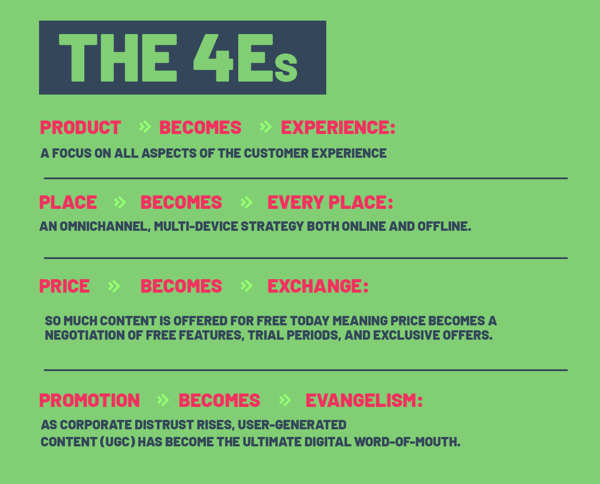
Product becomes Experience
Here, by Experience, we mean the total customer experience; understanding the journey your customer takes from the very first moment they come into contact with your brand, to when they purchase an item and beyond.
Marketers, and salespeople, can no longer skirt-by only thinking about getting their products off the shelves and into the homes of consumers. Today, products are a-plenty and product advantage, i.e. being the only product on the market that solves a particular consumer pain point, lasts little-to-no-time at all.
According to Forbes, “Retailers succeed in the experience economy not so much by what they sell, but how they sell it”. It’s all about creating a consistently pleasing experience for customers; triggering an emotional connection that’s memorable both before-purchase and after-purchase.

Source: Econsultancy
Nearly 50% of shoppers now shop on their mobile phones more often than they do in-store. So, a brand that is focusing on brick-and-mortar stores and not optimising their digital experience is going to miss out. Similarly, if your social media and website are at the top of their game, but your staff are rude to customers and your store carpets are shabby, you’re going to lose custom.
Beyond the basics, however, for your marketing approach to fully embrace the ways of experiential marketing, you have to get creative! Thinking outside the box and developing exciting approaches that elevate your brand’s products to the next level is what will make you stand out from your competitors.
You don’t have to break the bank either. While some of the Fortune 500s will be staging experiences to rival the latest blockbuster, you can use your knowledge of your target audience to really impact them with key “WOW moments”.
Place becomes Everyplace
In the old model, Place is the literal place where your business chooses to distribute its products or services. This could range from a physical store, to warehouses or e-commerce shops. The problem is that place, in the 4Ps, is always on the retailer’s terms: their store, their warehouse, their rules. Customers would have to come to the retailer to make a purchase.
Everyplace flips this concept on its head; it forces brands to do the hard work. Be available to your customers in the places, and on the platforms, where they spend most of their time. And the customers? Well, they can choose to engage with you or simply ignore you. So it’s up to your marketing team to ensure your offerings happen in the right place, at the right time and in the right manner.
Now, before you go jumping out of bushes trying to flog your products to unsuspecting joggers… Implementing an Everyplace strategy which is fully omnichannel takes some planning. First, you need to take a long hard look at your target market and the current channels and platforms available to them.
For example, 30 years ago if you wanted to target 15-25-year-olds you might look to buy-up a large chunk of prime-time television advertising during the showing of a popular teen drama, like 90210. However, nowadays that sort of targeting paradise just doesn’t exist. Instead, this demographic can be found largely on social media platforms with at least 45% claiming to be online “almost constantly”.
But it’s not just social media that’s important, there are multiple avenues that you need to connect with to meet your customer ‘Everyplace’. Modern businesses need to master an omnichannel approach that incorporates both online and offline tactics that can surprise and delight. This is the only way to capture the attention of your modern consumers.
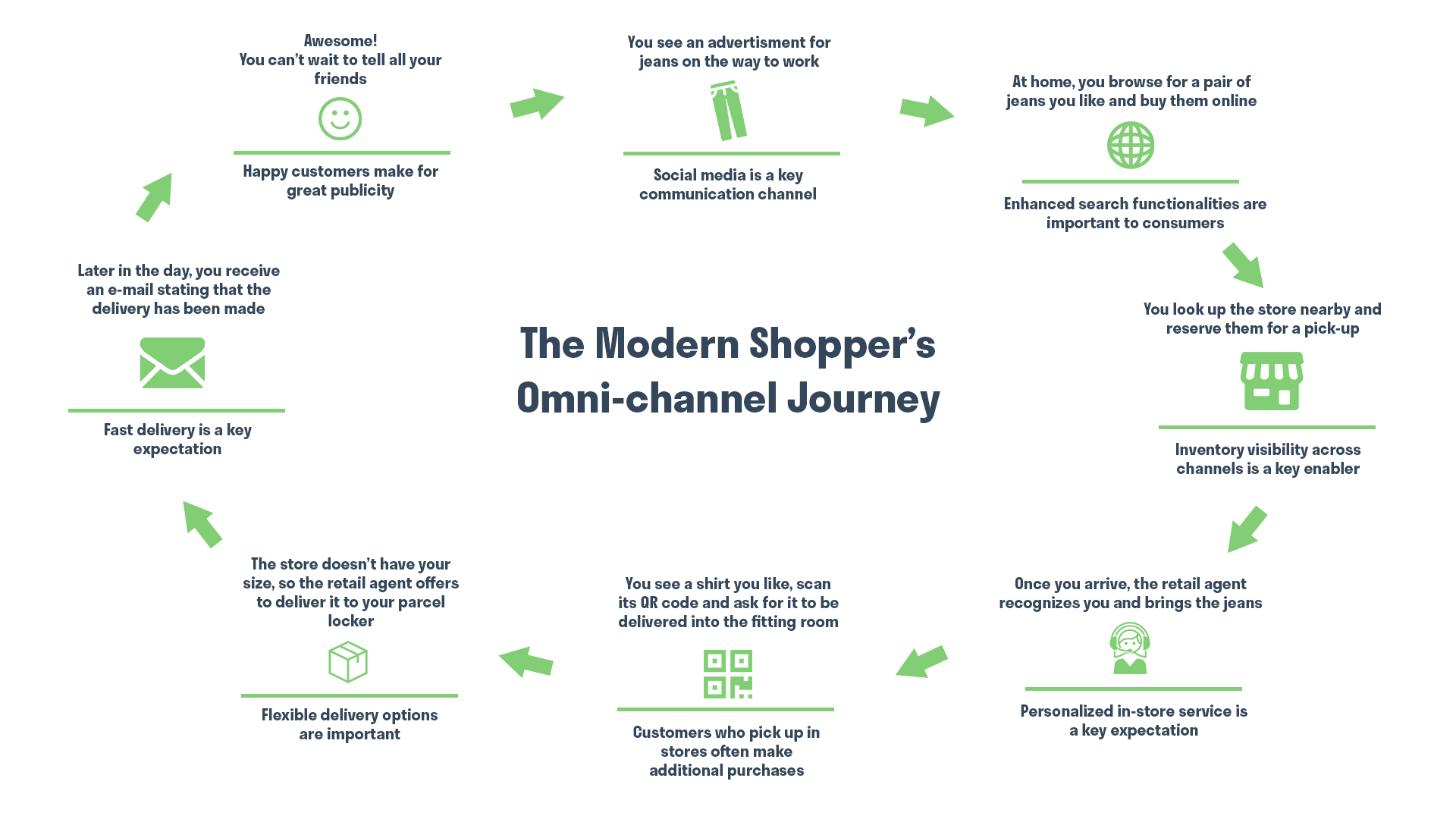
Source: Paldesk
Once you have identified the correct channels, you will use the data you have already collected on your customers to inform your strategy and determine the avenues where you will invest your budget. A truly Everyplace approach sees all elements of your strategy, both online and offline, communicating with synchronicity to give your customers a seamless experience. 
Price becomes Exchange
Author Emily Lloyd-Jones is known to have said, “Nothing comes for free. We just don’t know what it’ll cost”. In today’s oversaturated markets, sometimes you do have to give a little to get something back. Prices are no longer fixed and quality goods do not equal an automatic purchase. Not when there are 10 other items on the market claiming to do the same thing for a whole lot cheaper! Instead, the price of a product or service becomes a more malleable concept and retailers must come to understand the value of their customers’ time and attention, and their true worth in revenue over a lifetime.
A great example of Exchange in practice is the model adopted by many SaaS (Software as a Service) companies. Vying for attention in a crowded market, many have turned to offer freemium options as a way to grab the attention of their customers, demonstrate their value through a high-quality experience and then hook that all-important purchase on a long-term basis.
Freemium services split new customers into 2 tiers: free and premium. Free tier users have access to a limited version of the service for a short time. The goal here is to move customers along the funnel after demonstrating real value with the hopes that this will translate into lifetime brand loyalty and a greater overall experience.
But how can retailers implement Exchange? You can’t go around giving out high-ticket products like clothing for free. However, you can get creative with your payment methods, discounts, and exclusive offers to elevate the shopping experience and provide greater value for your customers.
For example, online clothing retailer, ASOS, paired up with the alternative payment app, Klarna. The app allows ASOS customers to ‘buy now, pay later’ on any item on their site… 30 days later to be precise! Now you understand how those Instagram influencers always seem to have the latest fresh looks...
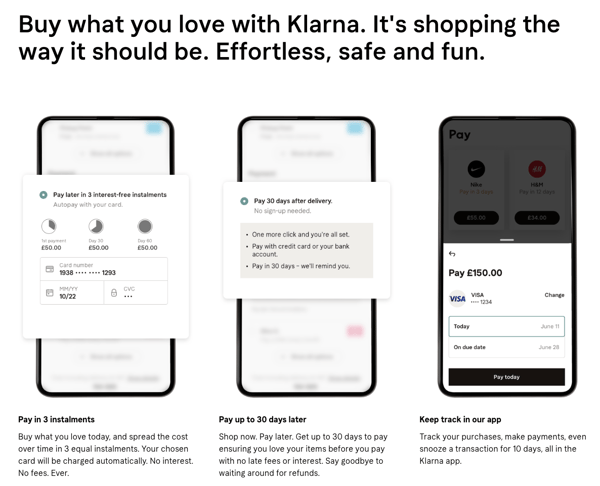
Source: Klarna
Promotion becomes Evangelism
Push, push, push, that’s what Promotion used to mean. Do everything in your power to ensure the customers see the advertising content - be it billboards, television or radio. Promotion was a critical part of the 4Ps model. But the thing is, focusing solely on outward marketing tactics makes for a very product-centric strategy and in experiential marketing, that just won’t cut it.
You know as well as I do that the customer journey does not end at the point of purchase. Even the most basic products like bread and butter, for example, if enjoyed by the purchaser, are recommended to their friends and family. Or, if the product is unsatisfactory, it is banned from their household cupboards for years to come. This is known as Word-of-Mouth (WOM) power.
In the era of the 4Es, WOM has become supercharged. Customers who now have access to social media, review websites, forums, etc., have come to be the ultimate critics - wielding the power to boost or bury your business with a single tweet! Oh, the horror!
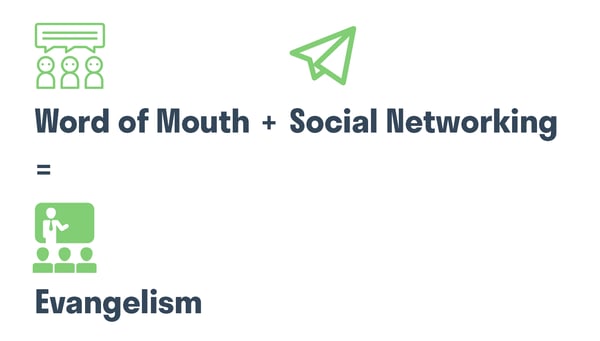
Don’t worry though, if you’ve been following the 4Es that we’ve laid out above, you shouldn’t be shrieking in fear of bad reviews. Instead, you should be patting yourself on the back and enjoying your hefty audience of evangelist customers as they praise your impeccable customer experience, high-quality products and valuable impact on their day-to-day lives.
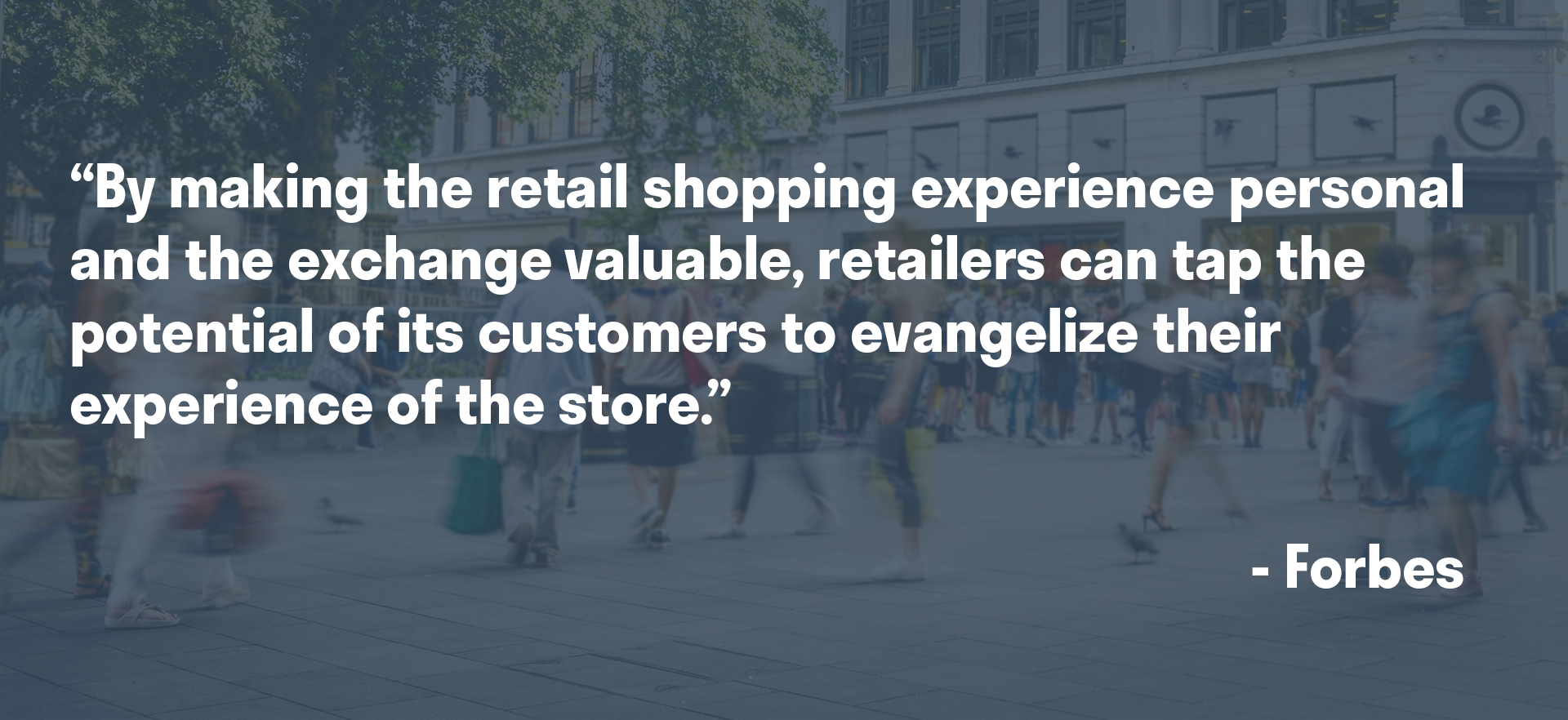
Authenticity is important to 90% of modern consumers and this makes user-generated content (UGC) the crown jewel of evangelism. Learning about the great experiences your business has to offer on a consumer-to-consumer basis will generate trust between new customers and your brand.
Be sure to show your brand-evangelist customers that you value their content by including it in your online sales journey. If you do, Salesforce reports that you could see a 10% increase in conversion rates.
How Can You Implement the 4Es of Experiential Marketing?
Implementing the 4Es into your experiential marketing strategy can only be done with a top-down customer experience (CX) approach. Audience research is important to understand the types of experiences, communications, and services that your customers will respond positively to.
Samee & Larimo put forward a model for creating emotional and memorable experiences for consumer audiences, believing that these 4 steps are the cornerstone of experiential marketing:
1) Offering or stimulus
2) Interaction between the customer and company
3) Experience and value co-creation
4) Lasting value
Staying on top of the most recent trends within experiential marketing will also be important to ensure you continue to evolve and meet the needs of your growing customer base. Forbes outlined 3 major trends in experiential marketing which will be crucial to the success of campaigns in the coming years. These are:
Immersive Environments
74% of respondents say they are more likely to purchase products promoted via branded events
Virtual Reality (VR)
80% of consumers feel positive about experiencing branded VR tactics
AI & Machine Learning
43% of millennials would consider paying a premium for a hybrid human-bot customer service channel
Conclusion
At the beginning of this blog, you may have thought that replacing a tried and tested method with something brand new was a pretty risky approach. Don’t fix what ain’t broke, right? But now you see how truly beneficial evolution and positive change can be.
Valuing your profit and products over your customers is undeniably a broken way of conducting your business. Instead, create memorable experiences that elevate your products and gain life-long brand evangelists.
In today’s market, you can’t afford to stand still; marketing is all about evolving to maintain a competitive advantage and, in the experience economy, the 4Es of experience marketing reign supreme.
Level-up and become a master of Market Segmentation with your very own FREE guide: The S.M.A.R.T Guide to Market Segmentation 💌 Don't hesitate to get in touch with me directly via contact@hurree.co with any of your questions or comments you may have!
Share this
You May Also Like
These Related Stories
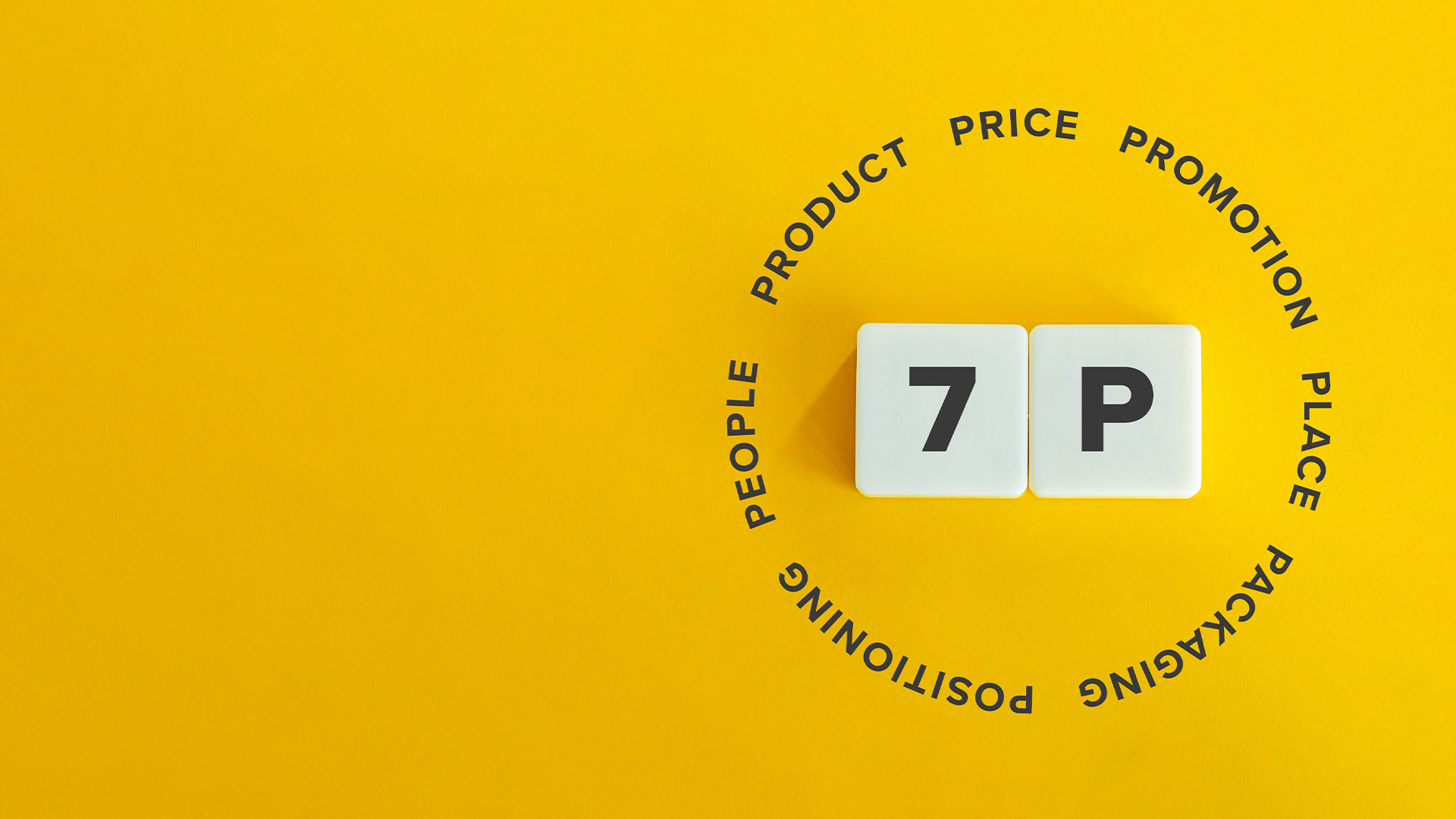
The 7Ps of The Marketing Mix: Streamline your Strategy
-1.jpg)
What is Marketing Mix Modelling? 3 Benefits & Limitations

